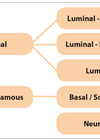Features archive for September 2018
‘No Deal’ Brexit – how might it impact urological practice in the UK?
On 29 March 2017, the Government of the United Kingdom of Great Britain & Northern Ireland triggered Article 50 of the Lisbon Treaty, formally starting the two-year period for talks with the European Union (EU) in which to reach a...
Recent developments in bladder cancer
There have been some exciting developments in bladder cancer over the last few years. Immunotherapy has prolonged survival in a proportion of patients with metastatic disease, with sustained efficacy in some. Advances in genetic analysis and molecular subtyping make personalised...
A negative ureteroscopy for stone disease: is it acceptable and is it avoidable?
Urinary tract stone disease and the consequent demand for endoscopic intervention in the upper urinary tract is an increasing phenomenon [1]. Although ureteroscopy is generally considered to be associated with low morbidity [2], risks do exist. Recognised complications include urothelial...
History of prostate biopsy – part 2
For Part 1 of this topic is available here. The major limitations of the transrectal ultrasound (TRUS) guided prostate biopsy (PBx) protocols are the risk of profound sepsis and the risk of persistently significant false negative rates, related to the...
The burning issue of urinary tract infections
Urinary tract infections (UTIs) occur when bacteria colonise and proliferate in the urinary tract. These are characterised by specific clinical symptoms (dysuria, suprapubic tenderness, urgency and urinary frequency) which commonly occur alongside the finding of bacteriuria. UTIs are common –...
Bladder carcinoma MRI
Bladder malignancy is one of the commonest malignancies of the renal tract, accounting for approximately 6% of male malignancy and 2% of female malignancy. The incidence increases with patient age with 70% of patients being over the age of 65...
Balanitis xerotica obliterans
Balanitis xerotica obliterans (BXO) / lichen sclerosus of the male genitalia is a common cause of acquired phimosis, and was first described by Stuhmer in 1928 [1]. It is described in medical literature as a chronic inflammatory condition of unknown...









